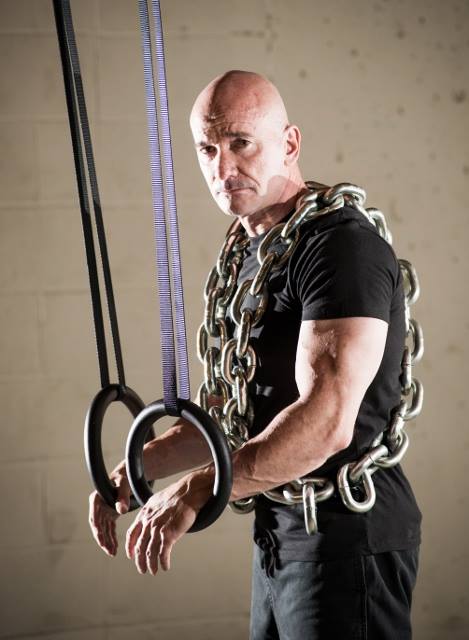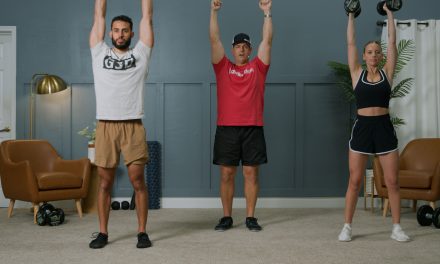You’ve experienced this before, whether you realized it at the time or not. It starts when a certain song comes on the radio. Then, the next thing you know, you’re in a better mood than you were just a moment earlier.
Or, it starts when a certain song comes on the radio. And then, the next thing you know, you’re in a much worse mood than you were just a moment earlier.
How can this be? Well, it goes much further than the idea that some songs are either inherently good or inescapably bad. It has to do with a psychological term known as an “anchor”.
An anchor is any stimulus that can trigger a particular psychological state. And a song on the radio is just one example of a psychological anchor. Anchors occur throughout all of our sensory channels (visual, auditory, kinesthetic, gustatory [taste] and olfactory [smell]) in an almost infinite number of ways.

If you ever took a psychology class, you probably remember reading about Ivan Pavlov’s famous experiment with dogs. Using food and a metronome, Pavlov trained a group of dogs to salivate whenever the metronome was triggered.
For those dogs, the anchor was the association between hearing the sound and the food that they’d been conditioned to expect after hearing the metronome. Psychologists describe their salivation as being the result of a conditioned response.
So, an anchor is a stimuli, which brings forth thoughts, emotions or a combination of both. We actually create anchors throughout our lives.
And many of them are created without any conscious thought or intention on our part. Think about the feelings you get when you smell a certain type of food or perfume.
Or the associations you have with a particular time of the year or location such as a house. These are the kinds of anchors that develop and are reinforced over time. And this is an important point because anchors ultimately exert a significant influence on our lives based upon the decisions that they lead us to make.
So, if the ‘Psychology of Strength’ is about the intentional control of the mind, how can we use the phenomenon of anchoring to our advantage? Very simply, by intentionally creating new anchors.
So here are some simple, effective steps for anchoring positive associations to your training regimen. These steps are so simple that most people will read through the list and that will be the end of it. But remember, mental exercises are just like physical exercises. It doesn’t matter if you know them, it only matters if you do them.

1. Create a mission statement for your training.
It could be related to improving performance in a given sport, improving your appearance or, if you’re like me, you just want to be stronger.
So I might write out something along the lines of, “Every day I train I’m getting stronger and stronger.”
The key here is to make your mission statement specific to your goal(s) and build it into a concise, positively-phrased statement that you can both write down and repeat to yourself. For example, before each set, repeat your mission statement in your head or even out loud.
2. Make a list of songs you love that also put you into a powerful mood.
Then create a master MP3 “power playlist”. Whenever you train, play that music and let the powerful, positive associations take you to new levels of accomplishment.
3. Spend five to ten minutes before you train by reliving a strong, positive memory.
A memory of an experience when you were performing at your best. Recall every detail of that memory. The time of year, the time of day, who else was present, how you felt before, during and afterwards.
Make it as real as you possibly can. Practice this with different positive memories, as many as you can recall. With practice, you will get better and better at putting yourself into your own peak-performance state. The results may surprise you.
For Guys That Want to Be Tough As Nails and Break Records in The Gym & Life —> Click Here.
By Mike Gillette















































































Your post is already inugirting, and I’m looking forward to the future ones in your series, Cam. I especially liked your comments: While I am solid in my beliefs, I am not as visible with them as I could/should be. [That is so true for me as well.] If I am not open with others about where I stand, then that makes it very difficult to lead people anywhere, because the “where” has not been defined. [It’s almost like ‘the blind leading the blind.’ Another statement that I relate to very much in my own life.] Any leader who is worthy of followers must have a clear conviction of where they currently are, and where they are headed — and the better they are able to communicate this to their followers, the better. What an awesome example of this last sentence is our Lord and Savior Jesus Christ. He could not have had the influence He did if He wasn’t the person that He was. He knew who He was, what He needed to communicate of His Father’s deep love for fallen man, and of what we need to do to come back into a saving relationship with Him.In my recent return to God, I feel very much like a child again, needing to cover so much ground that I’ve lost in the decades I remained apart from Him. Yet He has been guiding me and opening the doors for me to share with others that which He has been doing for me. I praise Him for that but I have so far to still travel. I’m just glad that it is not a journey I have to do alone; He’s with me. As I become more firm, more established, more concrete in what I believe and in the truths of His Word as He leads me to understand them, then I will be ready in a greater manner to build that kind of bridge over the canyon to connect with others around me for Him. May all of your weekly readers set this as a focus for 2013 to build a bridge in their life to those close to them for Christ.